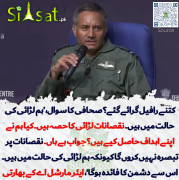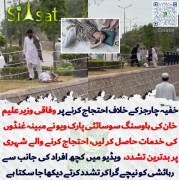Desi_Action
Banned
The Sikhs Existence (1762-1849 A.D.)
The Sikhs’ establishment was witnessed in the Punjab after the Mughal emperor Aurangzeb Alamgir passed away in 1707. After his death, the whole country saw the number of changes through the country and the situation of anarchy was witnessed. The head of the Sikhs clan, Charat Singh, by sensing the shaky situation, established his throttlehold in Gujranwala in 1763. In 1774, Charat Singh passed away leaving the room for son, Mahan Singh who then became the father of the most luminous leader in the history of the Punjab, Maharaja Ranjit Singh.
Ranjit Singh was the one brilliant leader who got the whole Punjab as united under one flag. Maharaja’s rule elongated from the shores of the Jamuna to the Khyber and then from Kashmir to Multan. Of the whole lot of the Sikh leaders, Maharaja Ranjit Singh happened to be the most powerful Sikh leader who ruled for 40 years. After Maharaja’s death, the Sikh empire got divided into tiny principalities looked after by numerous Sikh jagridars. Seeing the weak condition, the British of East India Company found this the great opportunity to rule and the same happened that they put the full stop to the Sikh throttlehold in the Punjab in 1849.
Sikh community is the follower of Baba Guru Nanak Sahib, who was the son of Mehta Kalu Chand and Tripta Devi – both his parents were Khatris by caste. Baba was born in 1464 at Nankana Sahib.
It is believed that the Sikh religion happens to be the product of the Sufi and Bhakti school of thought. Glancing at Sikhism, the fact comes up that the basic principles of the Sikhism happen to be widely closer to Islam than Hinduism.
Sikh Shrines (The Gurdwaras) are the places where Sikhs worship. These Gurduwaras serve as instiutions, meeting places and also as rest houses for the travelers. They are called the most essential part of any Sikh’s religious and social life. As Sikhs ruled over the subcontinent for nearly 100 years, one find hubdreds of Gurdawaras all over Pakistan and most of them are situated in Punjab. A few are more famous like Nankana Sahib and Punja Sahib.
Here is Sikh construction style in Nankana Sahib; near Lahore

The Sikhs’ establishment was witnessed in the Punjab after the Mughal emperor Aurangzeb Alamgir passed away in 1707. After his death, the whole country saw the number of changes through the country and the situation of anarchy was witnessed. The head of the Sikhs clan, Charat Singh, by sensing the shaky situation, established his throttlehold in Gujranwala in 1763. In 1774, Charat Singh passed away leaving the room for son, Mahan Singh who then became the father of the most luminous leader in the history of the Punjab, Maharaja Ranjit Singh.
Ranjit Singh was the one brilliant leader who got the whole Punjab as united under one flag. Maharaja’s rule elongated from the shores of the Jamuna to the Khyber and then from Kashmir to Multan. Of the whole lot of the Sikh leaders, Maharaja Ranjit Singh happened to be the most powerful Sikh leader who ruled for 40 years. After Maharaja’s death, the Sikh empire got divided into tiny principalities looked after by numerous Sikh jagridars. Seeing the weak condition, the British of East India Company found this the great opportunity to rule and the same happened that they put the full stop to the Sikh throttlehold in the Punjab in 1849.
Sikh community is the follower of Baba Guru Nanak Sahib, who was the son of Mehta Kalu Chand and Tripta Devi – both his parents were Khatris by caste. Baba was born in 1464 at Nankana Sahib.
It is believed that the Sikh religion happens to be the product of the Sufi and Bhakti school of thought. Glancing at Sikhism, the fact comes up that the basic principles of the Sikhism happen to be widely closer to Islam than Hinduism.
Sikh Shrines (The Gurdwaras) are the places where Sikhs worship. These Gurduwaras serve as instiutions, meeting places and also as rest houses for the travelers. They are called the most essential part of any Sikh’s religious and social life. As Sikhs ruled over the subcontinent for nearly 100 years, one find hubdreds of Gurdawaras all over Pakistan and most of them are situated in Punjab. A few are more famous like Nankana Sahib and Punja Sahib.
Here is Sikh construction style in Nankana Sahib; near Lahore






































